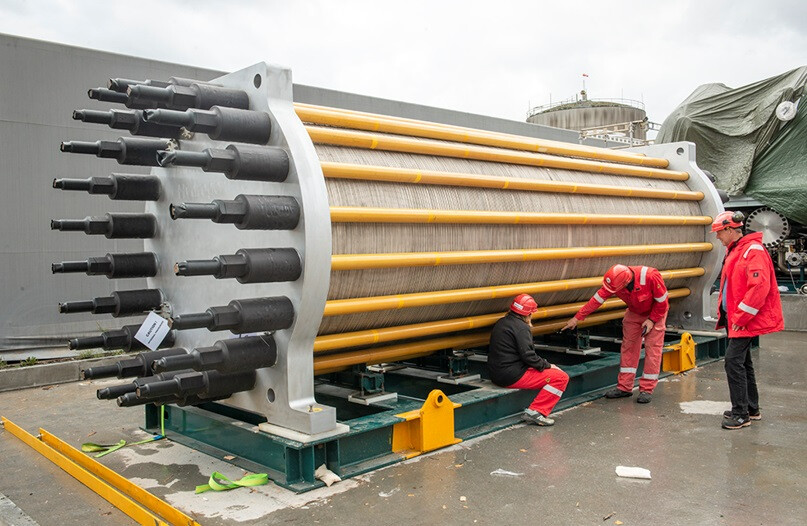
Santiago, Chile - In a significant step towards establishing itself as a leader in green hydrogen production, Chile's economic development agency, Corfo, has announced the selection of three companies to build electrolyzer assembly plants within the country. The move signals a strong commitment to fostering a local hydrogen ecosystem and reducing reliance on imported technologies.
The selected firms include two Chinese entities, Beijing SinoHyEnergy and Guofuhee (through its Brazilian subsidiary), and Spanish consortium JoltechSolutions. These companies will establish facilities capable of assembling both alkaline and proton exchange membrane (PEM) electrolyzers, with production slated to commence by mid-2026.
Beijing SinoHyEnergy's project will focus on assembling larger-scale alkaline electrolyzers with capacities of 2.5 MW and 5 MW. Guofuhee's Santiago-based facility will produce alkaline electrolyzers ranging from 100 kW to 1 MW and PEM electrolyzers between 50 kW and 1 MW, offering a wider range of solutions for various applications. JoltechSolutions will set up its assembly operations in the Biobío region, focusing on electrolyzers with capacities between 100 kW and 1 MW.
This initiative is expected to significantly boost Chile's capacity to produce green hydrogen, which is generated by using renewable energy sources to electrolyze water. The locally assembled electrolyzers will be crucial for supplying hydrogen to various sectors, including transportation, industry, and potentially for export.
Global Hydrogen Developments Also Underway:
The news from Chile arrives amidst a flurry of global activity in the hydrogen sector:
Saudi Aramco Invests in Blue Hydrogen: In Saudi Arabia, Aramco has acquired a 50% stake in the Blue Hydrogen Industrial Gases Co. (BHIG), a joint venture with Air Products Quadra. BHIG aims to produce low-carbon hydrogen from natural gas while implementing carbon capture and storage (CCS) technologies. The project, located in Jubail, is expected to align its operations with Aramco's broader CCS initiatives.
Germany Backs Decarbonization with Hydrogen Focus: The European Commission has approved a substantial €5 billion ($5.4 billion) German scheme designed to support companies within the EU Emissions Trading System (ETS) in their decarbonization efforts. The program will provide funding for projects involving electrification, hydrogen adoption, CCS, carbon capture and utilization (CCU), and energy efficiency measures. The initiative targets significant emission reductions in key industrial sectors.
Green Hydrogen Project Proposed in Scotland: Green Cat Hydrogen (GCH) has announced a public consultation for a new green hydrogen production facility near Chapelcross, Scotland. Situated within the South of Scotland Enterprise’s Energy Transition Zone, the proposed plant aims to produce over 4,000 tonnes of green hydrogen annually, pending planning approval.
Ammonia Projected as Key Hydrogen Carrier: A recent report by Wood Mackenzie forecasts a substantial increase in global ammonia demand, rising from approximately 190 million tonnes today to nearly 430 million tonnes by 2050. This growth is largely attributed to the increasing role of ammonia as a carrier for hydrogen trade, particularly for seaborne transport, with the report suggesting ammonia will remain the primary hydrogen carrier through 2040.
Chile's strategic move to establish local electrolyzer production capacity, coupled with global developments in both green and blue hydrogen, underscores the growing momentum behind hydrogen as a critical component of the future energy landscape. By fostering domestic manufacturing, Chile aims to not only meet its own decarbonization goals but also position itself as a competitive player in the burgeoning international hydrogen market.
[Copyright (c) Global Economic Times. All Rights Reserved.]



























